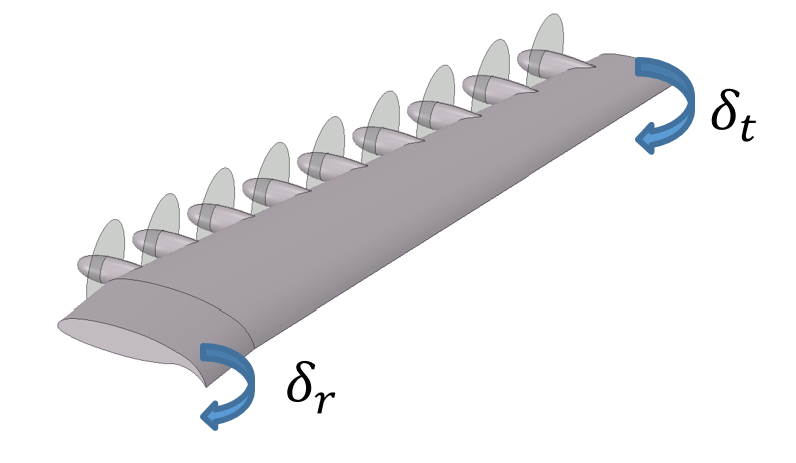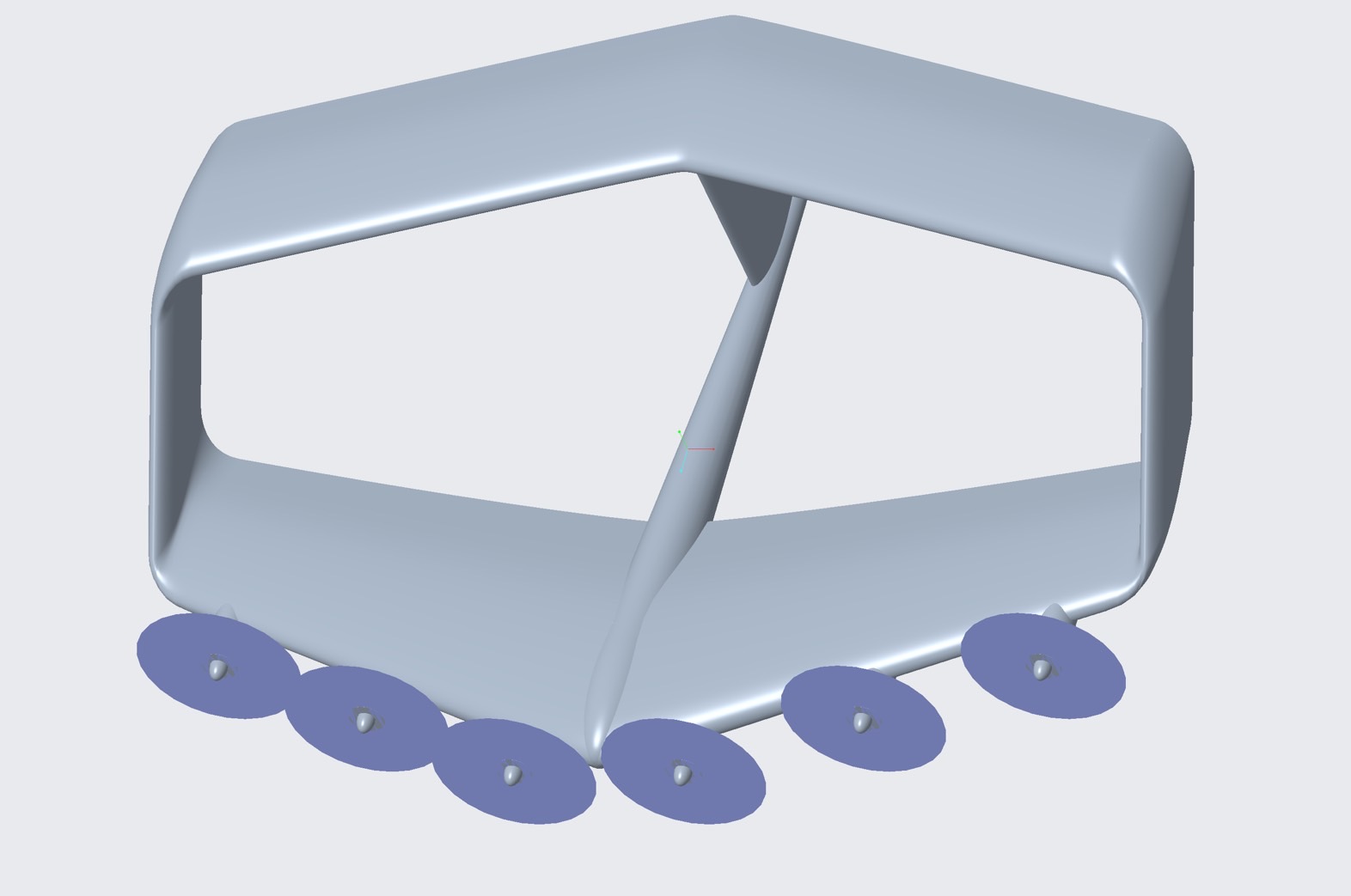Distributed Electric Propulsion on Morphing Wing

Distributed Electric Propulsion (DEP) system is an innovative way for improving the flight range of electric aircraft. Propeller slipstreams entirely distributed on a main wing increase lift during takeoff and landing. However, the increase in drag caused by the interaction between propeller slipstream and wing cannot be neglected.
Morphing wing technology can be used to achieve sufficient lift increment and drag reduction for takeoff and climb flights. Lift and drag characteristics of the morphing wing models with the DEP systems are investigated to verify some improvements of aerodynamic characteristics and to construct an aerodynamic optimization process to minimize drag in the takeoff and climb flight by varying the deflection of the morphing wing.
Non-uniform morphing models can be created by parametrising the root and tip deflection angles. Depending on the objective, root morphing or tip morphing geometries can be employed to achieve desired aerodynamic characterisitcs.
Unmanned Aerial Vehicle

Unmanned Aerial Vehicles UAVs, commonly known as drones, are aircraft without people on board, including the pilot. When checking whether a location is safe or not in the event of a disaster, UAVs have the advantage of being able to conduct investigations without sending people towards dangerous areas. Box wing is one of the closed wings. The shape of the wing can reduce the induced drag by reducing the vortex around the wing tip.
Here at the aerospace and combustion laboratory, our goal is to develop a box wing UAV. One of the challenges with electric UAVs is their short range. The range is proportional to the lift-to-drag ratio, and by applying a box wing, we aim to reduce drag, thereby increasing the lift-to-drag ratio and, consequently, the range. We think that the box wing technology has the potential to improve the mission adaptive capabilities of electrically powered UAVs.
This year we have started a collaboration with Institute of Fluid Science in Tohoku University. We calculate the aerodynamic performance of a UAV using CFD.

